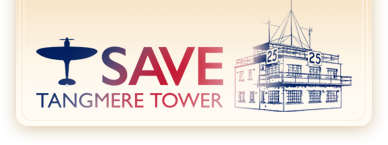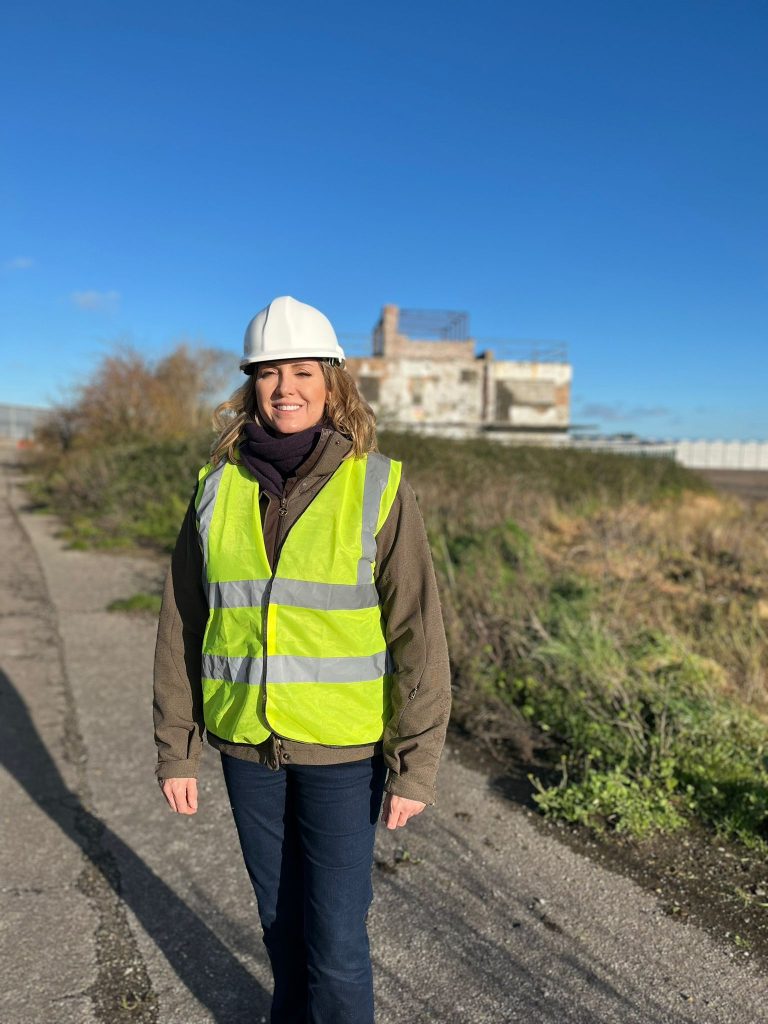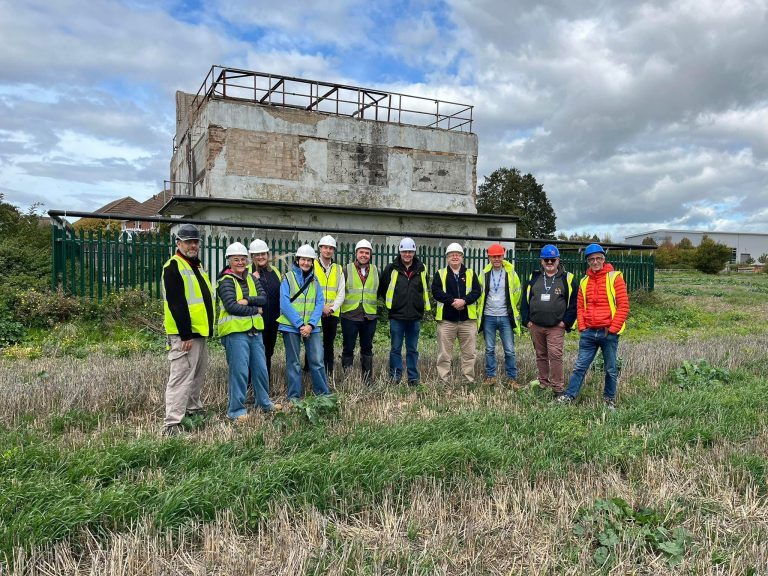On 5 April 1968, Alan Pollock undertook an extraordinary flight.
The young pilot flew his Hawker Hunter fighter jet underneath Tower Bridge in the heart of London to mark the 50th anniversary of the Royal Air Force, The problem was that he didn’t have the authorisation to do so, and his airborne stunt was actually a protest at the fact the anniversary wasn’t being appropriately marked.
Pollock was a skilled pilot, and one of the members of the low-level aerobatic display team (the fore-runner to today’s Red Arrows). His squadron had flown from RAF West Raynham in Norfolk to RAF Tangmere in Sussex as part of the 50th anniversary celebrations. Despite a stuffy head cold for which he’d been prescribed some medicine, Pollock said the flight to RAF Tangmere, which he called the “doyenne of the UK’s fighter stations”, passed fairly uneventfully. Things heated up on arrival, however:
“Tangmere hospitality was excellent, with a cocktail party and dance attended by the Duke of Norfolk, the then No.38 Group, Air Vice-Marshal ‘Mickey’ Martin of 617 Squadron Moehne Dam fame, the Mayor of Chichester and Group Captain Pater Latham whom I had met at 26 Squadron South African reunion and at Raynham, who was now Grp/Capt Ops No.38 Group. In a rather supercharged state and after so little sleep on the toxic drugs I had been prescribed, I filled the odd available ear about subjects dear to my heart… in particular the fighting effectiveness of the RAF and the poor celebrations during this special year.
The party at RAF Tangmere was a good one: champagne flowed! I had two-and-a-half hour’s sleep, awakened by the loud throbbing downwash of a helicopter from Thorney Island flying very close to the Mess, partly on a recovery mission to pick off our boss’s boater which had somehow found its way to the top of a rather inaccessible Tangmere flagpole!”[1]
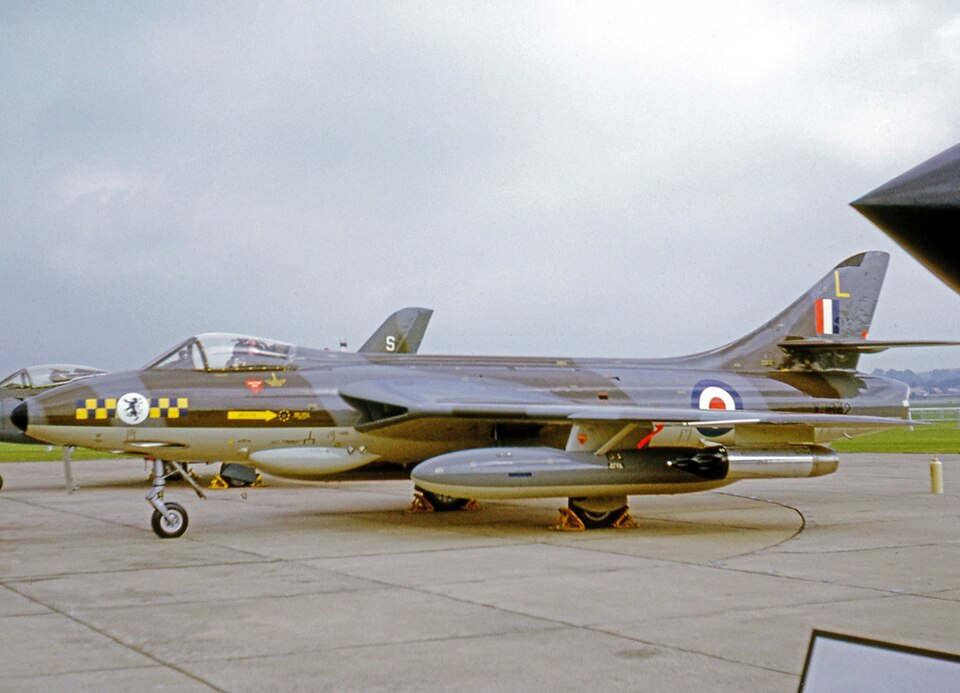
As a No.1 Squadron member, Pollock felt responsible for properly commemorating the occasion. Whether owing to a fit of temper, or fuelled by cold medicine, he decided he had the answer. Pollock decided that on his return trip to Norfolk, which took him past London, he could deviate from his allocated flight path and wake up some politicians. The trouble was how to achieve it:
“As we accelerated, rolling down Tangmere’s runway in two pairs and a singleton, with a five second stream spacing, my main pre-occupation was how best to break away from the rest of the section without attracting anyone’s attention. I was aware that a pair of eyes were looking down my jetpipe as we took off to the east. Immediately after take-off and the reassuring, quiet rumble and clonk had signalled the wheels locked up, I watched as the Hunter behind me turned belly on to me to beat up the airfield as a farewell fighter tribute to such a legendary airfield, symbol of fighter excellence – what a splendidly good and indiscretionary Boss! I knew that I would not now be seen by him!”[2]
As Pollock approached London on his unauthorised flight path, he came up the Thames past Wandsworth and Battersea.
“As I banked over climbing slightly to circle Whitehall and the historic seat of British government, I had to open my throttle fully to maintain a good tight orbit. I realised this would put the noise level up considerably, which up to now I had been careful to keep as low as possible to avoid offence or complaint. As I put the Rolls-Royce power on, I decided that this was perhaps what was really necessary at this juncture to wake up our MPs and remind other august figures, sitting chairbound at their ministerial desks below, that we still had a fighting Air Force, one small unit of which was celebrating its anniversary, despite the dead hand of government policy and the sickening cut-backs of previous years.
The message to Westminster was received. A debate was interrupted. Later a four MP cross party inter-service motion of support for the tribute was ruled retrospectively out of order. Quashed, it was reportedly deleted from Hansard!”
But it wasn’t just some debates that were interrupted. As Pollock turned his aircraft, he could see Buckingham Palace and the rest of London laid out before him. That was when he spotted Tower Bridge:
“There were cranes all up in the pool of London there. I had to get down below the cranes just to study the problem. It was easy to plunge through the middle but I had to do it safely. I worked out that the only way to do it safely was to go as high as possible to do a kind of bombing run on the top where the top two walkways are. I’d seen this London bus too that was there. That was also in my thinking that to get as high as possible not to cause any accident. There were all these sort of girders and bits of steel just above the cockpit. And that very instant, that fraction of a second, I thought the next microsecond my fin’s going to be taken off because I’d overcooked it. I was too close to the top and then something that only happened once before in my life happened and my heart stopped for a couple of seconds and it boosted up again. Just like a fuel pump.”[3]
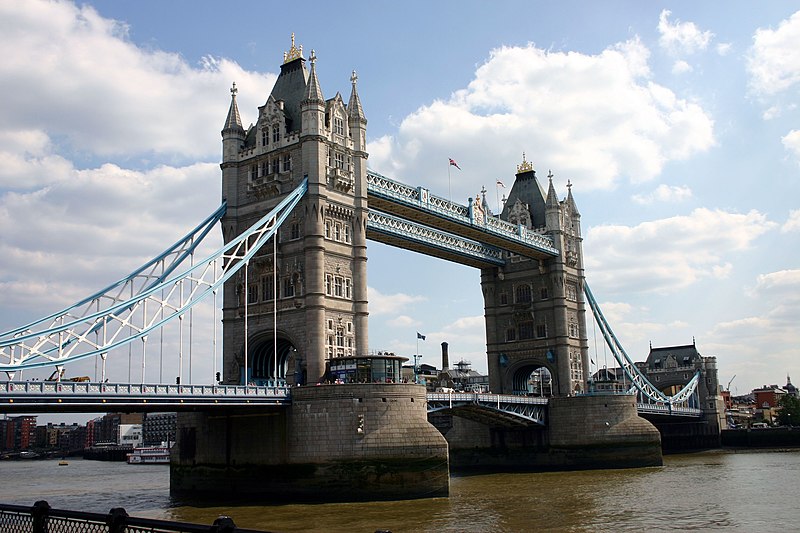
People on boats moored on the Thames thought they were dreaming, while those on the bridge described the big silver jet zooming past so close they thought they could touch it.
After a dramatic return to base, he was arrested and held for psychiatric evaluation. London authorities were furious, with strong criticism from the Metropolitan police. Despite this, he received widespread support, including over a hundred letters from the public, a keg of beer from BOAC and backing from MPs. He avoided being court martialled, though was eventually pensioned off.
As Pollock noted, there was no damage and there were no injuries as a result. Except for one, which he explained:
“The only accident was a bloke on a bike who stopped rather quickly and tore his trousers. And I said, I’d be very happy to pay for his ripped trousers. And you know, he contacted me and he said he was quite happy not to have them replaced.”[4]
His daring act remains a legendary moment in RAF history, symbolizing both defiance and devotion, as well as the aftermath of a champagne reception in Tangmere.
That turbulent 50th anniversary protest was not repeated when the 100th anniversary of the Royal Air Force was marked in 2018 with the tour of a baton around the country. Tangmere Aviation Museum was one of the places on the route because of the importance of the station, and both Andrew and Matt were there on the day to get a picture with the baton and the Museum staff. Thankfully, it seemed, fewer protests were needed that day!
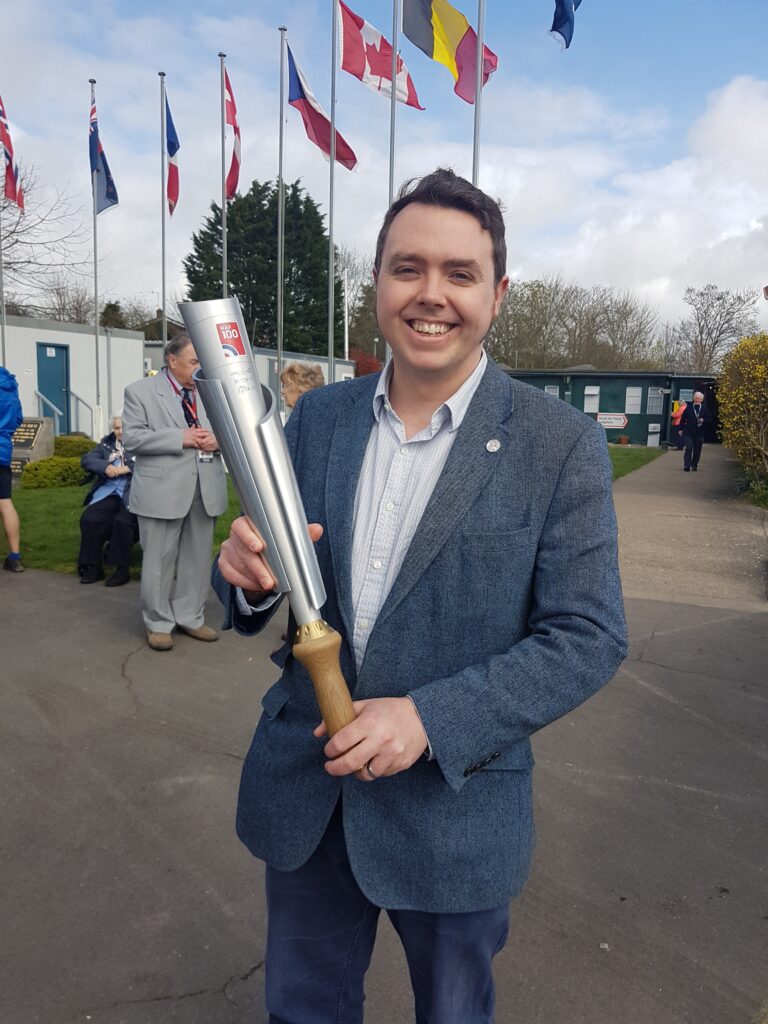
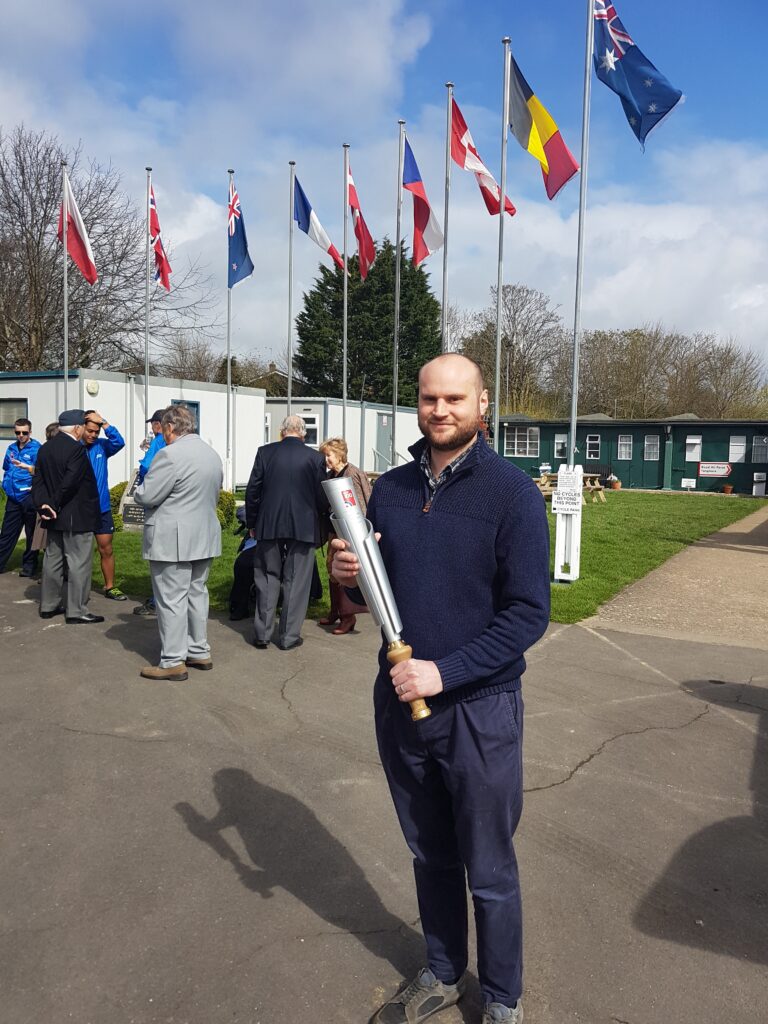
[1] ‘Why I Flew my Hunter through Tower Bridge – 5th April 1968 by Flight Lieutenant Al Pollock’, Jever Steam Laundry [https://www.jeversteamlaundry.org/4sqnper004.htm]
[2] ‘Why I Flew my Hunter through Tower Bridge – 5th April 1968 by Flight Lieutenant Al Pollock’, Jever Steam Laundry [https://www.jeversteamlaundry.org/4sqnper004.htm]
[3] ‘Tower Bridge Jet’, BBC Witness History, 05/04/2010 9 https://www.bbc.co.uk/sounds/play/p006xbvc]
[4] ‘Tower Bridge Jet’, BBC Witness History, 05/04/2010 9 https://www.bbc.co.uk/sounds/play/p006xbvc]
